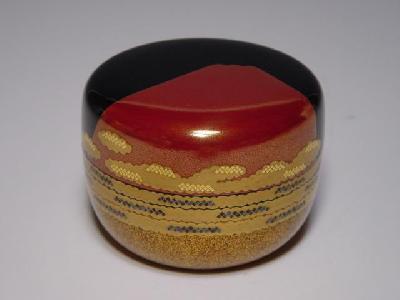Japanese tea used for tea ceremonies is called “matcha,” and there are two types of matcha; koicha (thick tea) and usucha (thin tea). Usucha is put in a container called “usuchaki,” while koicha in “koichaki.” In the ancient times, koicha was mainly used for tea ceremonies, but later in the 16th century, when Wabi-cha (the tea ceremony that emphasizes on simplicity) became popular, usucha began to be favored due to its plain taste and moderate price.
Natsume is a typical tea container for usucha. Natsume may be made of wood, lacquer over layers of paper, ceramic or metal. The designs also vary from the unpatterned to the ones with colorful pictures of the season. Natsume is selected in accordance with other equipments.
As natsume is simple in shape, the craftsmen’s conscience as well as the appearance quality decides the excellence of the work. It is a most suitable item for the modest atmosphere of the tea ceremony.
















